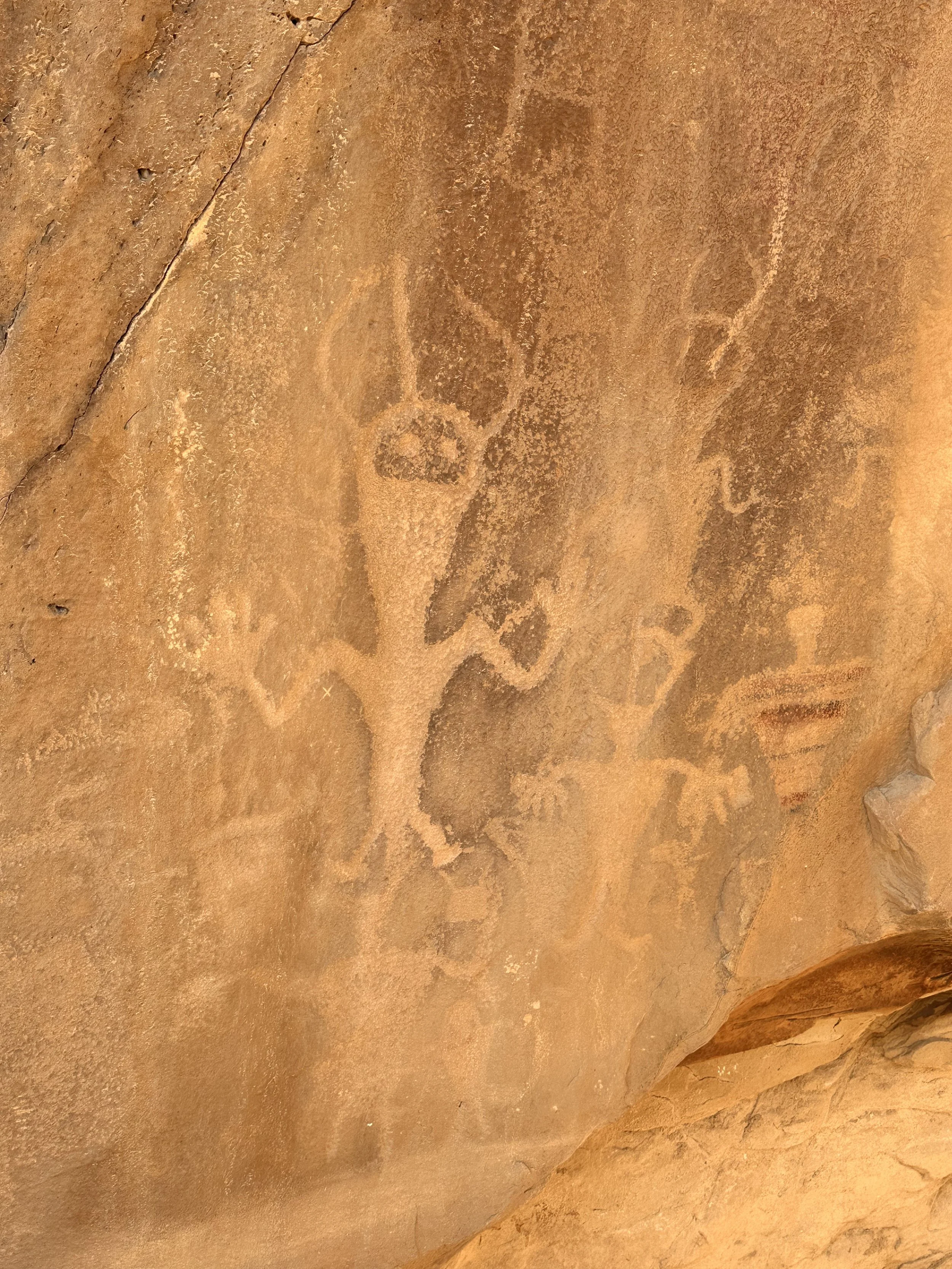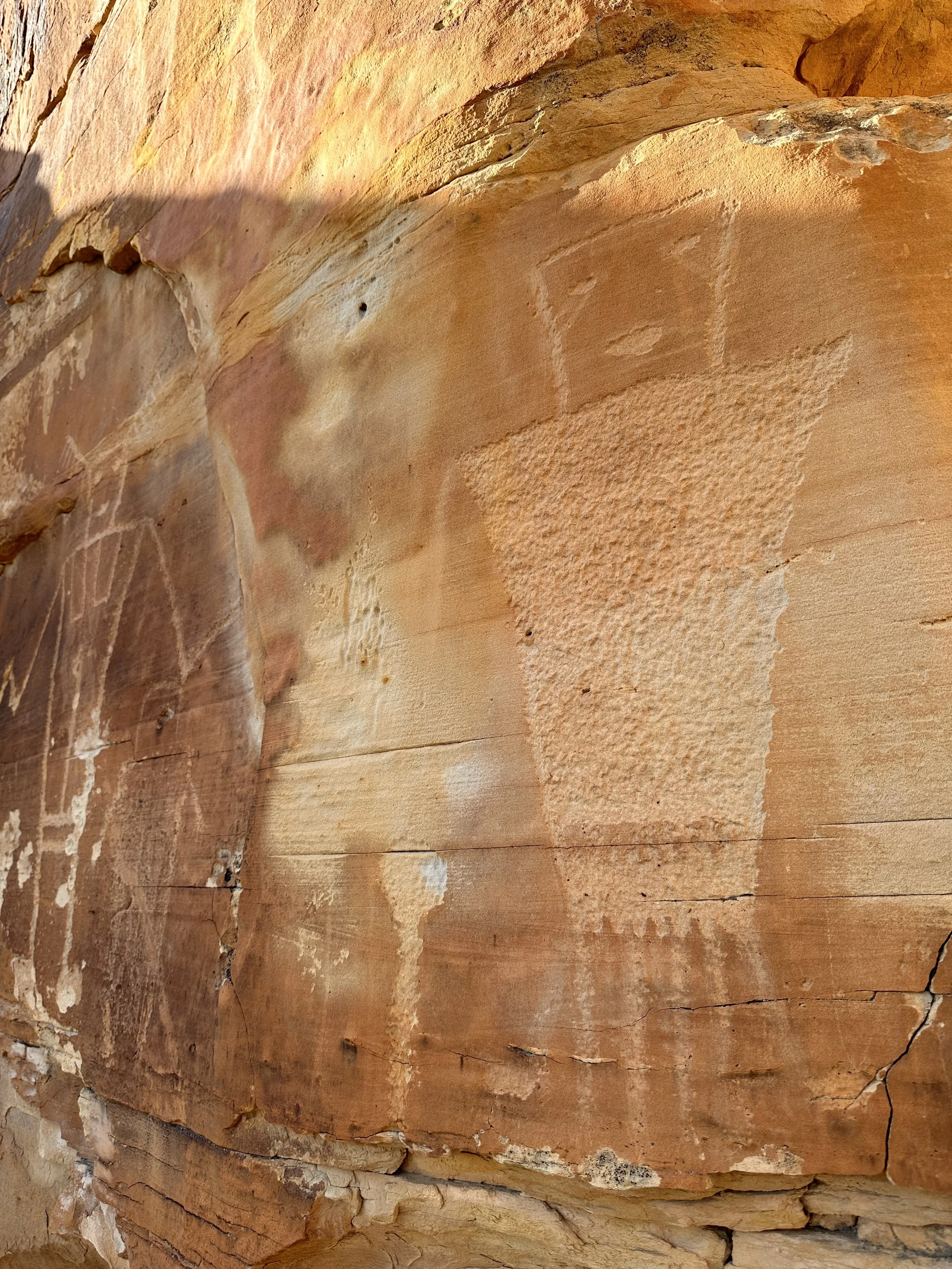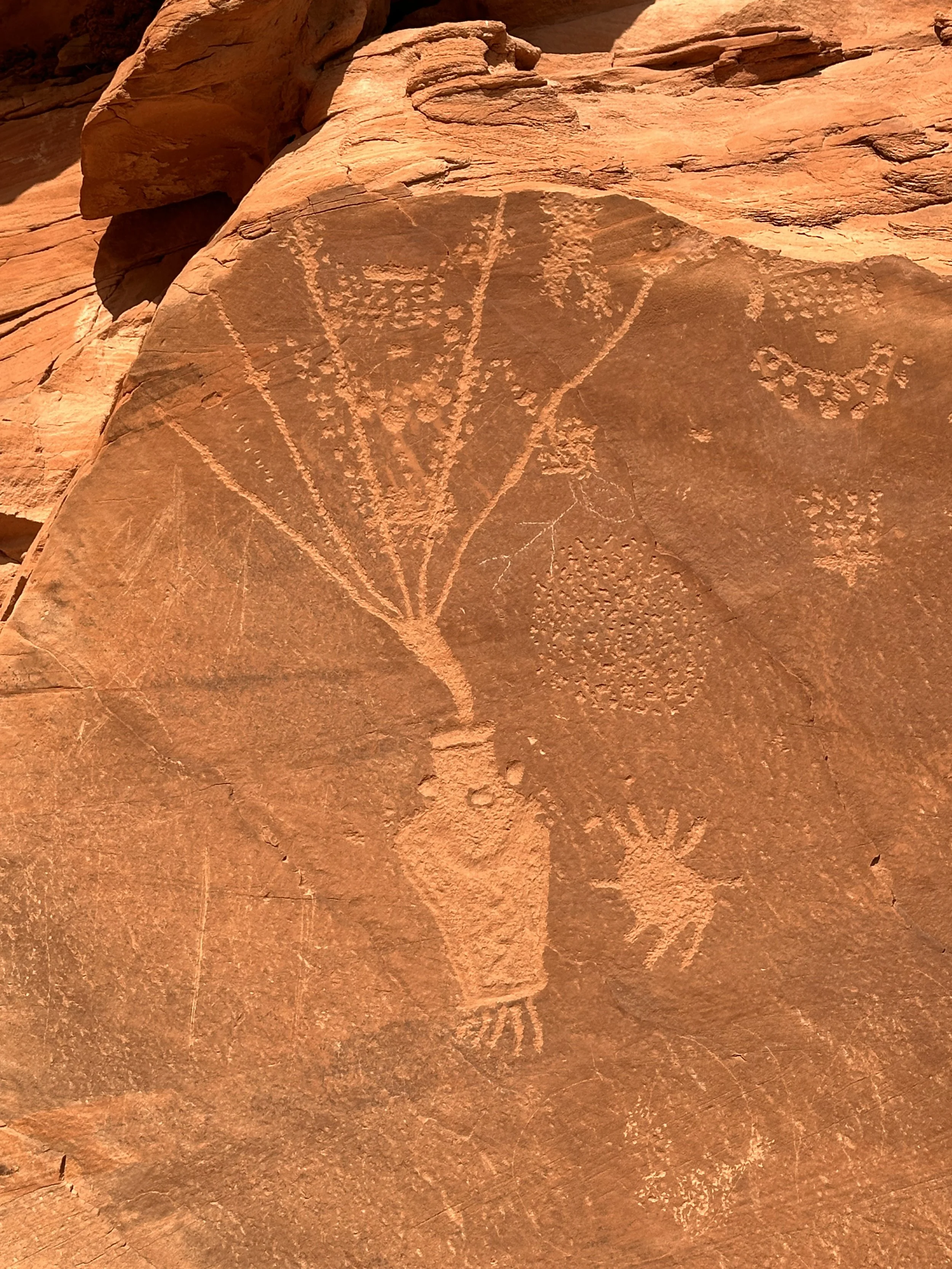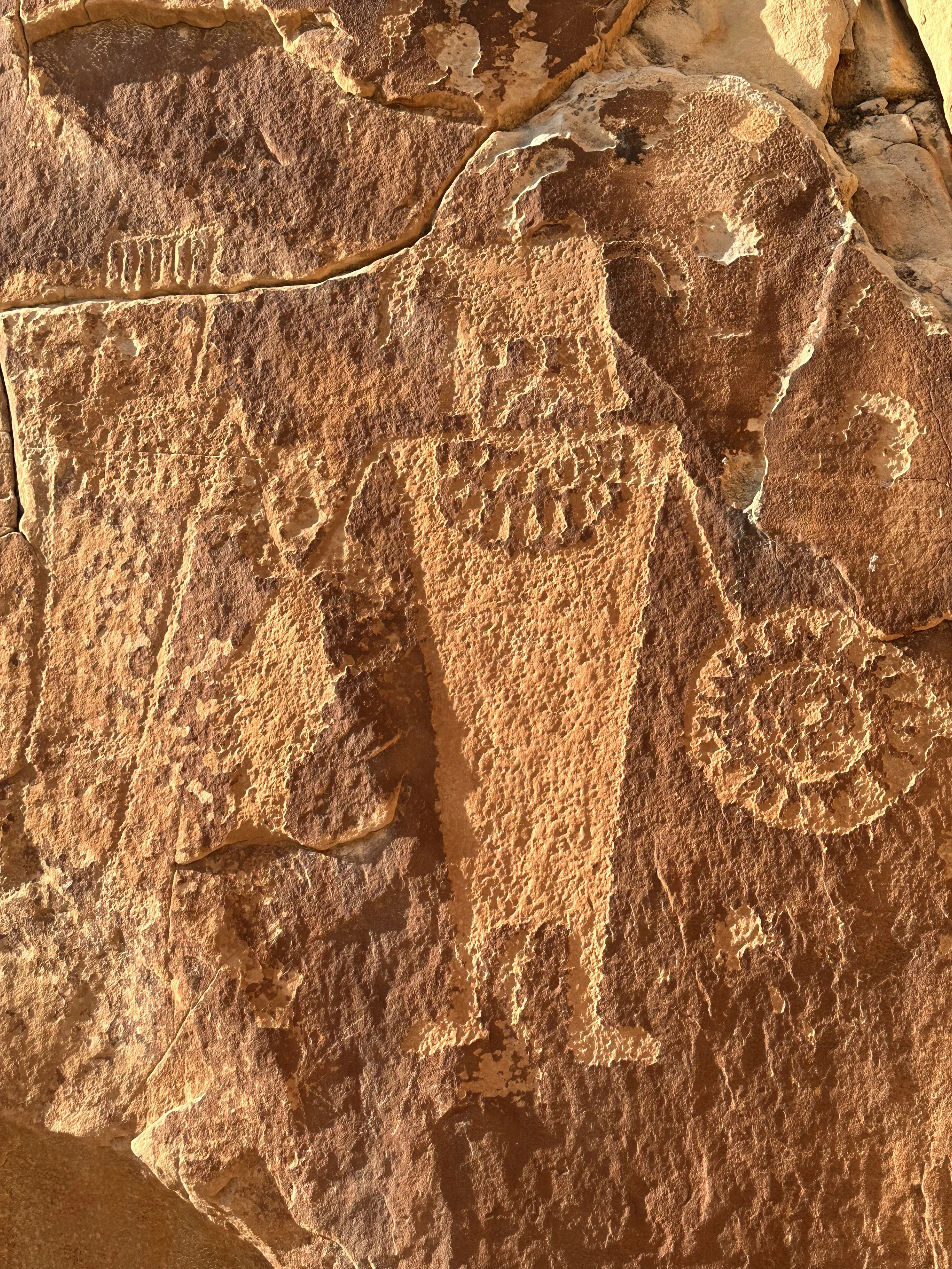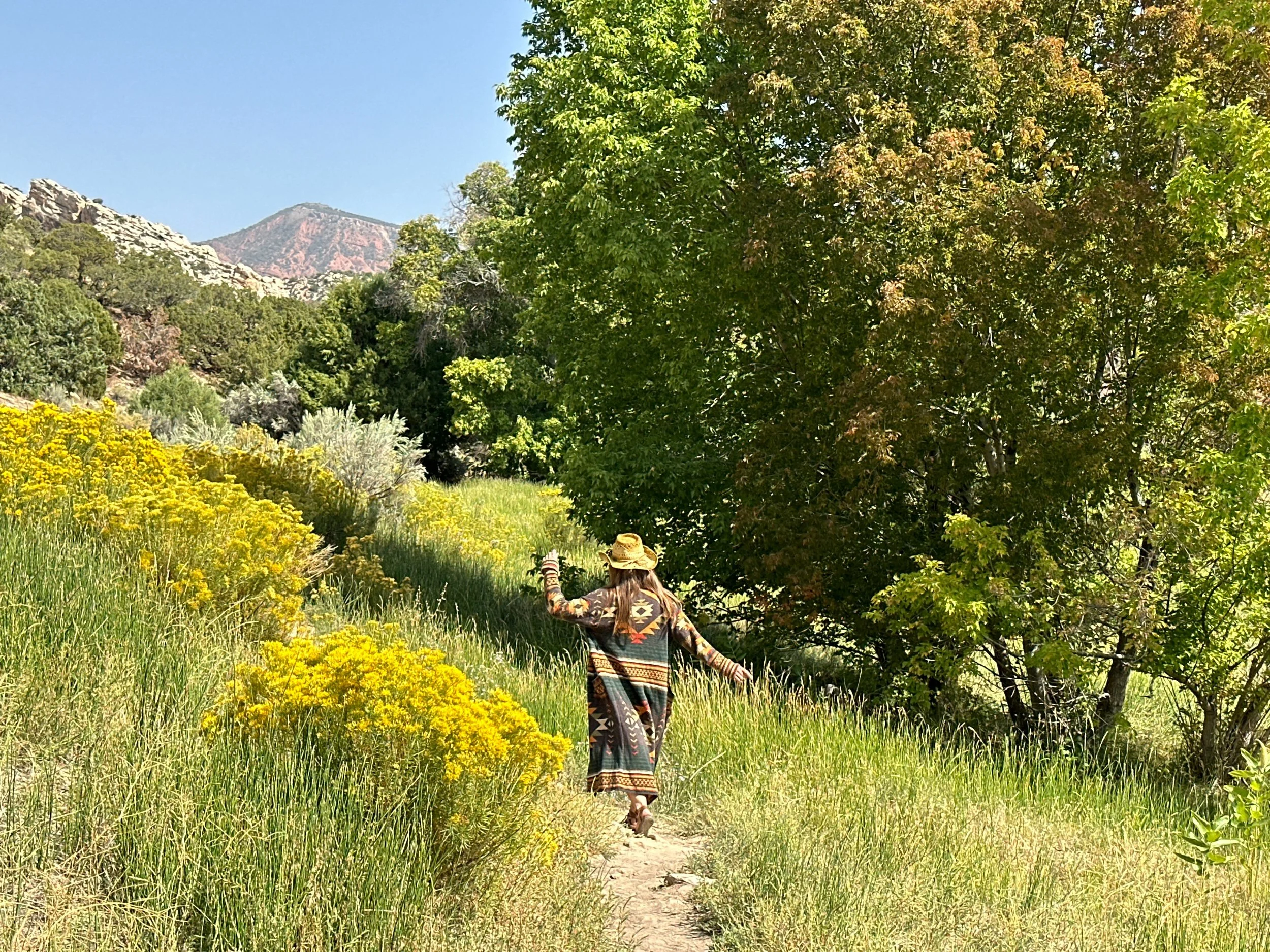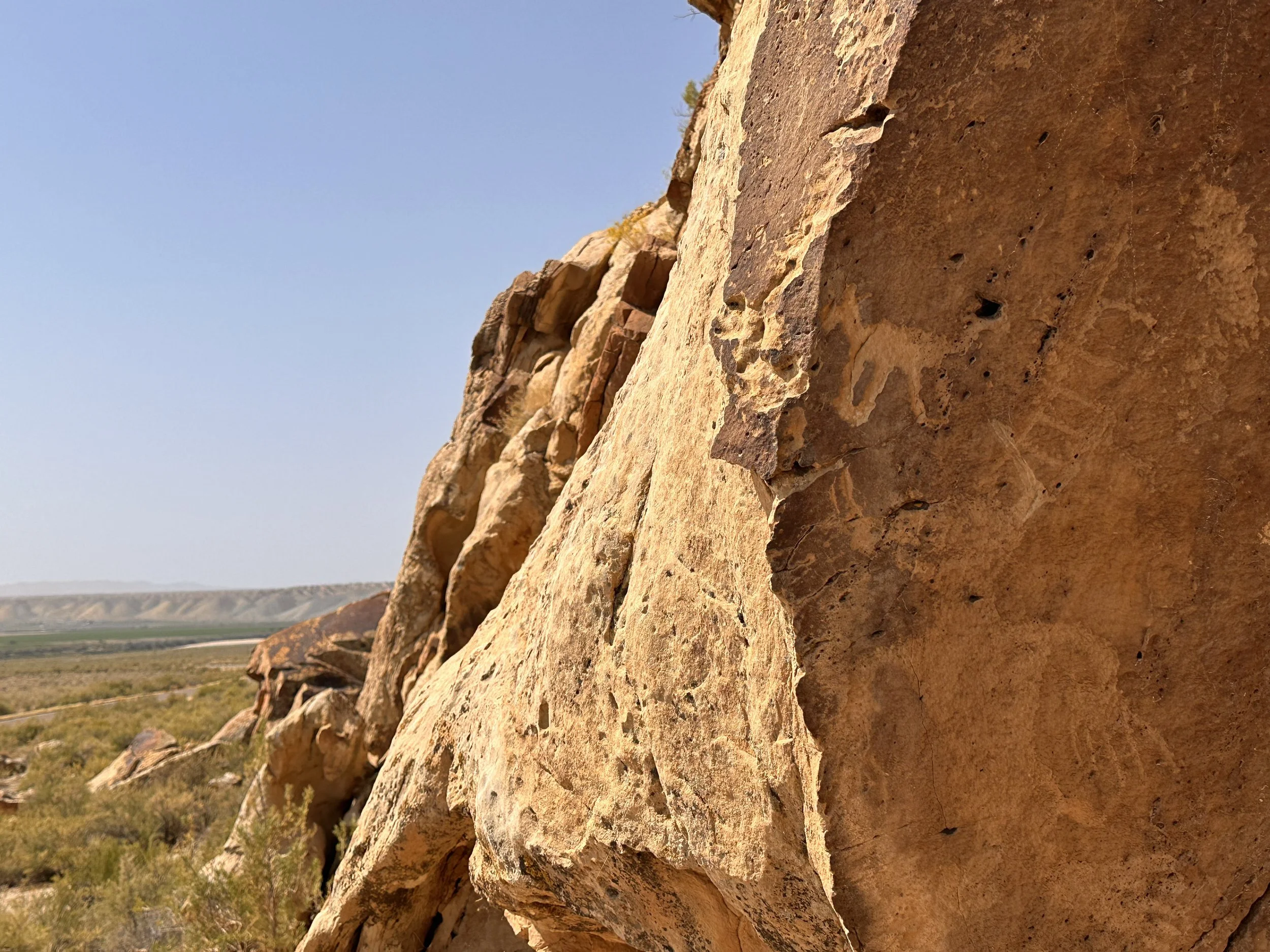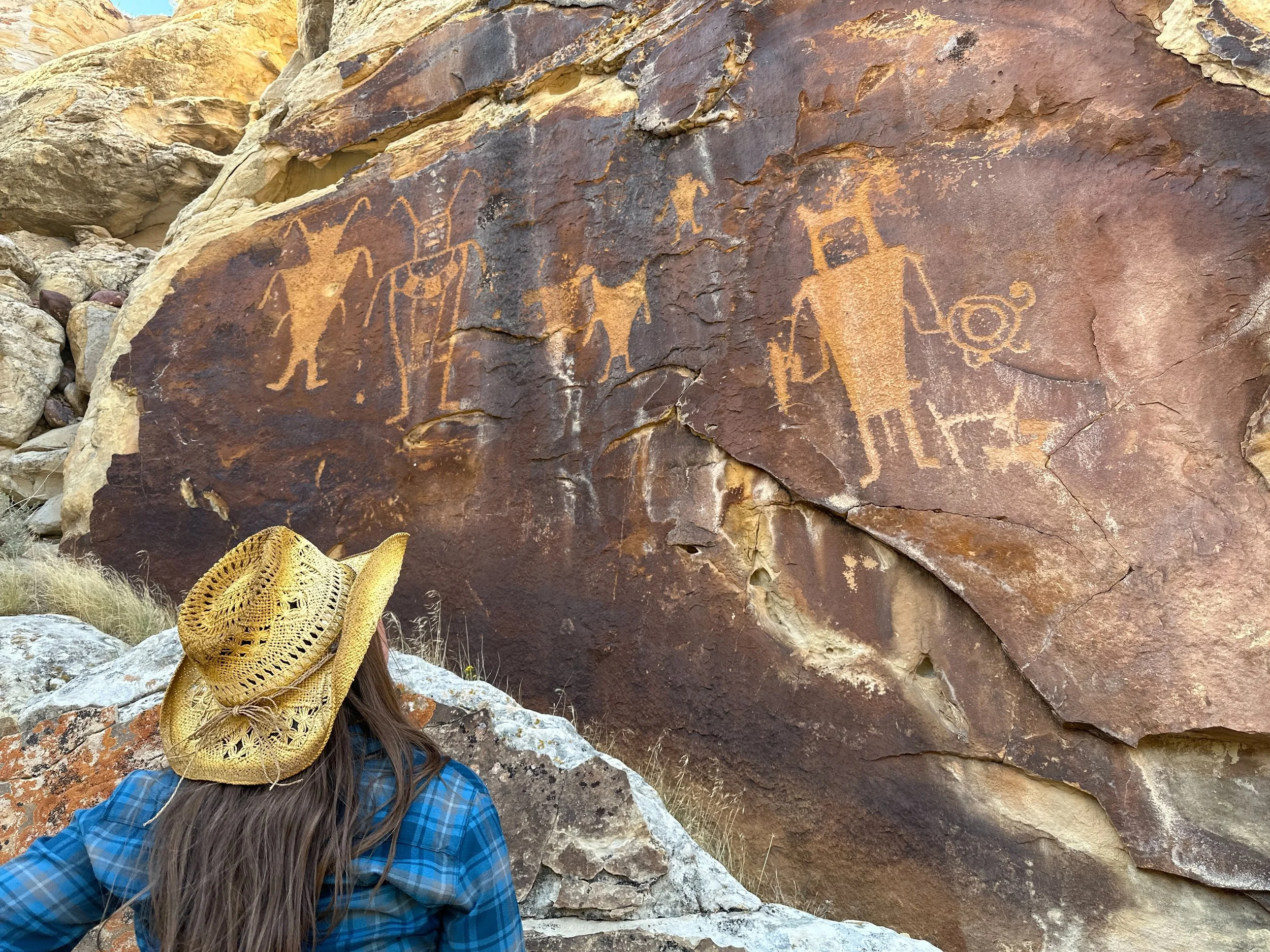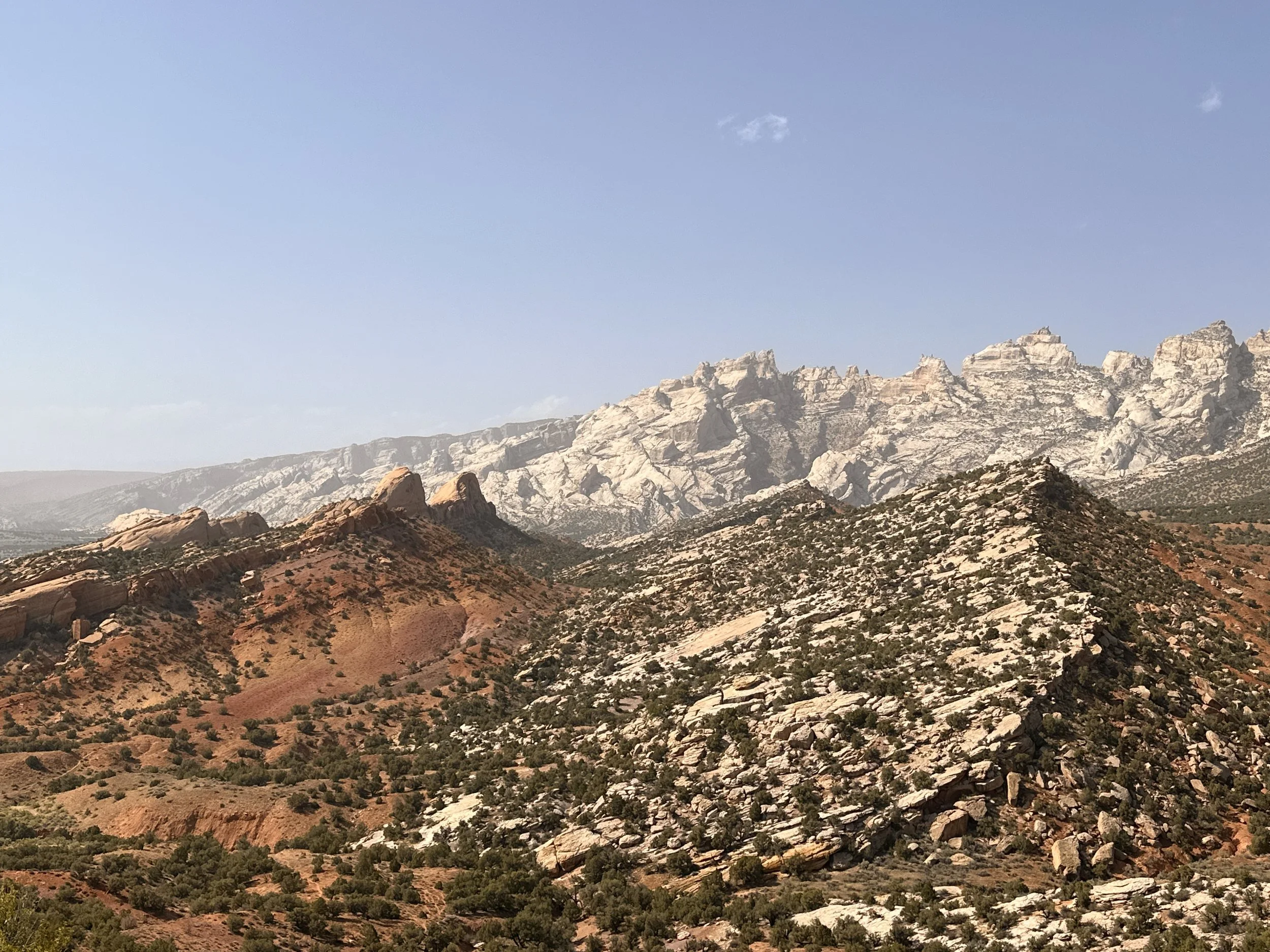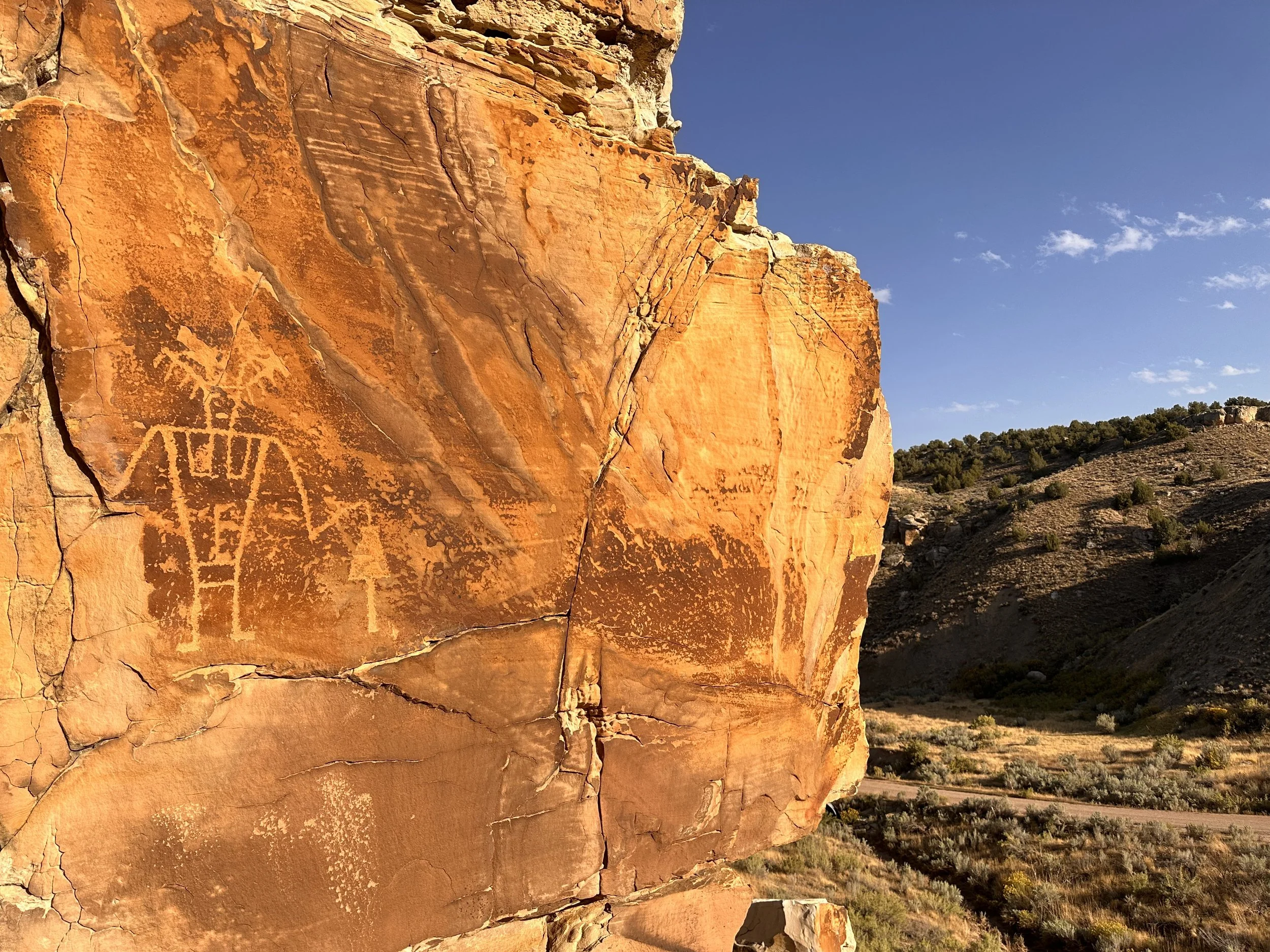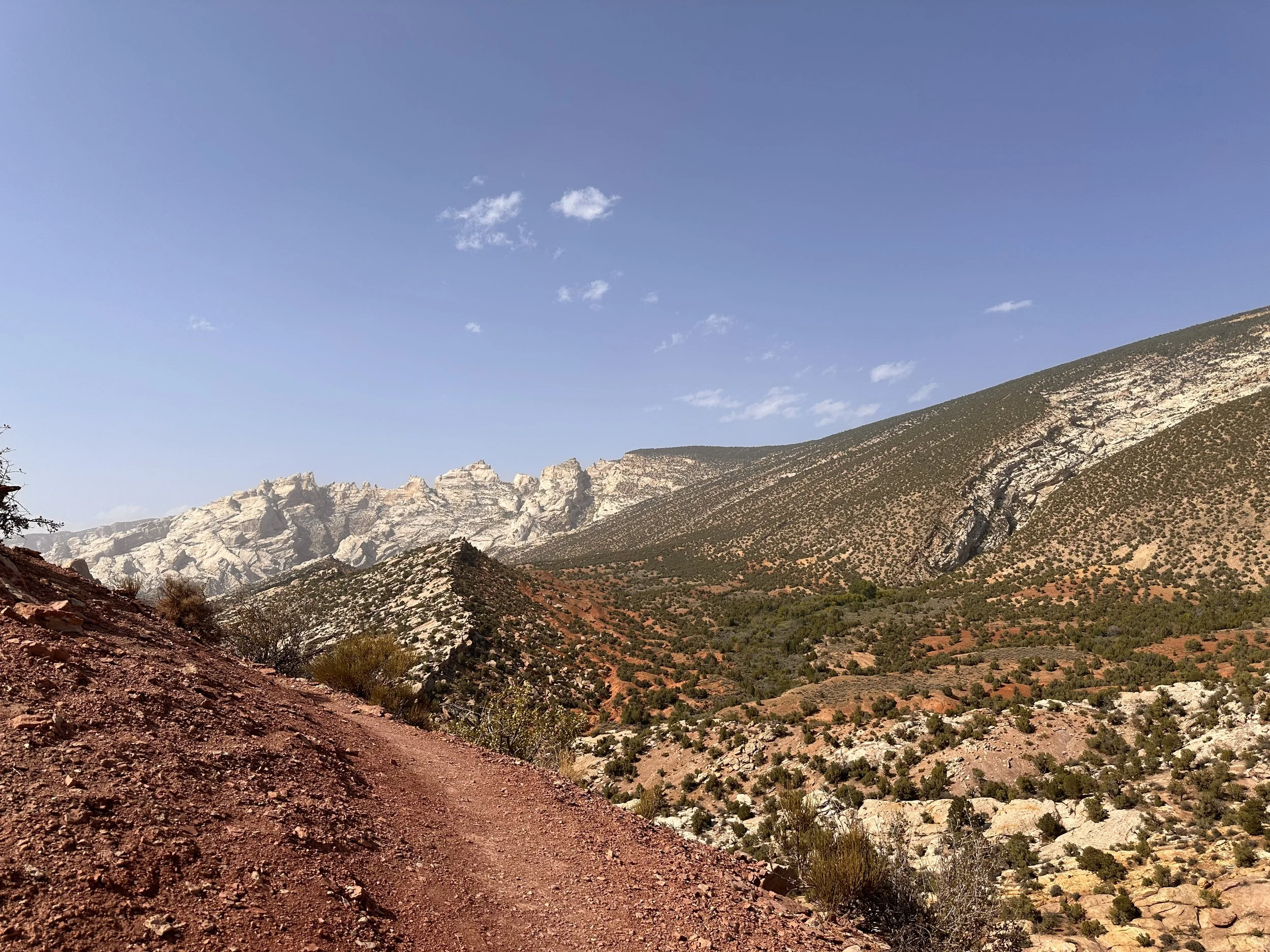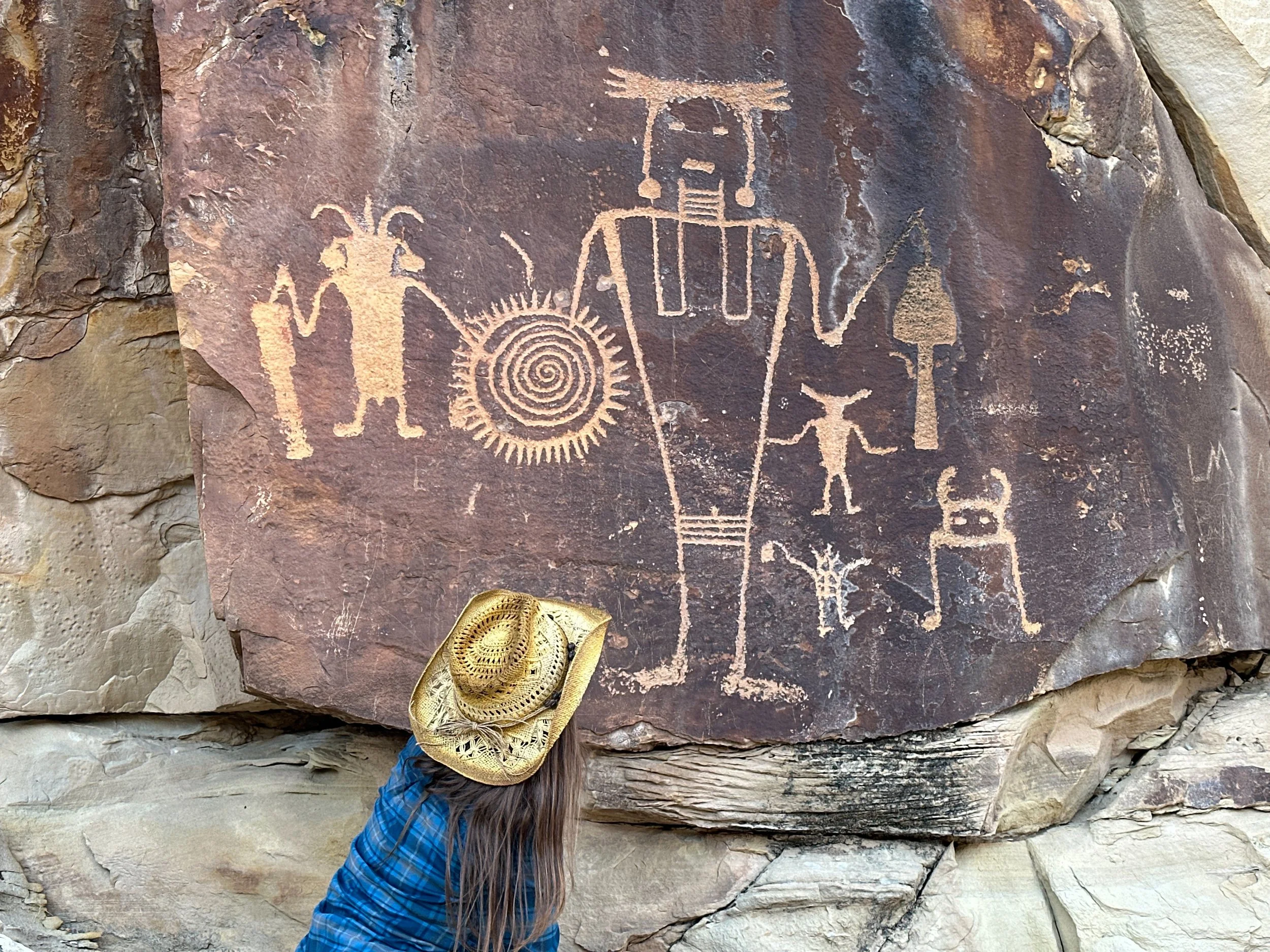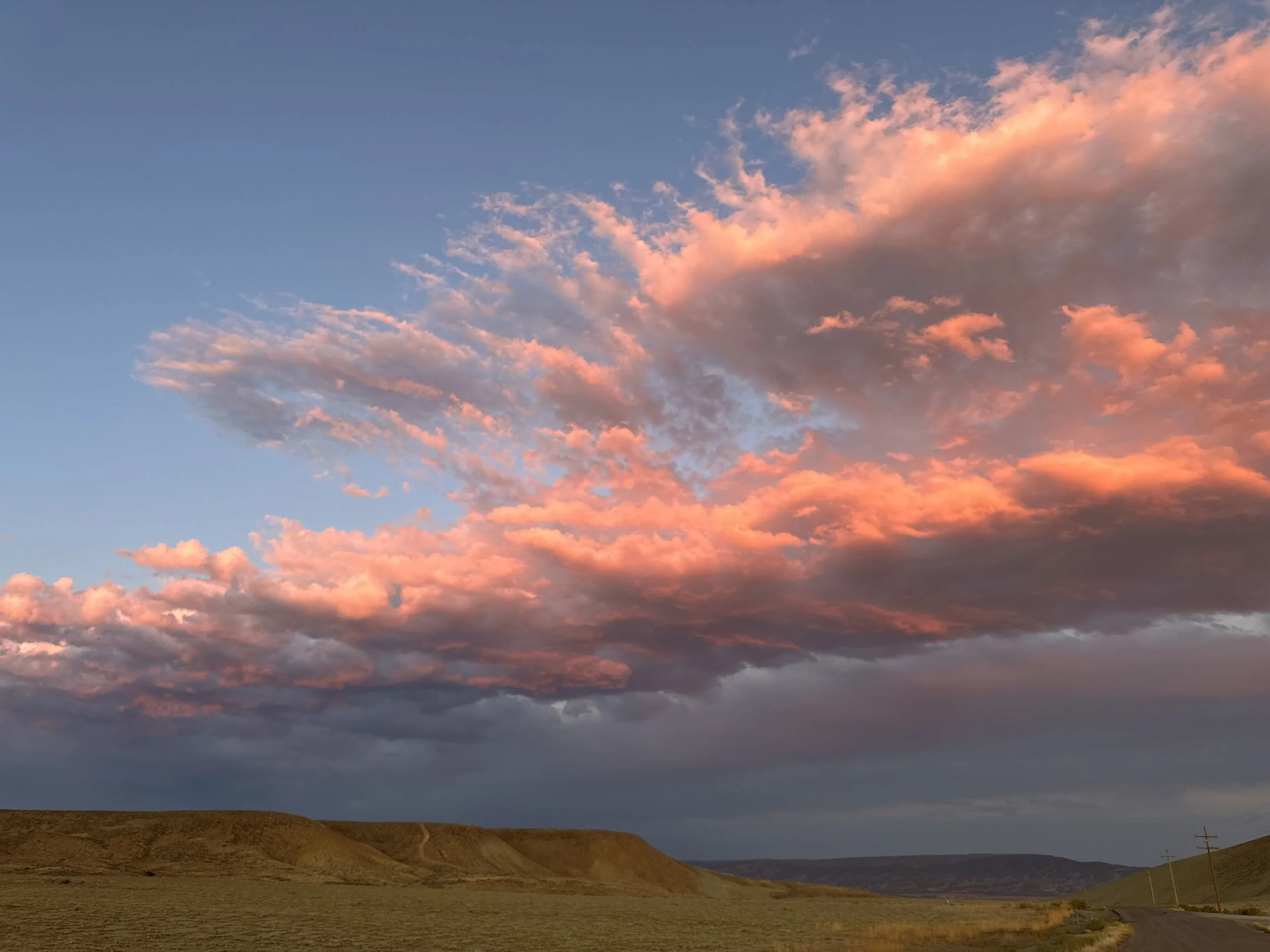Dinosaur National Monument
A last minute decision to escape the cold and the clouds at Flaming Gorge led (1-hour south) to a beautiful day with better weather in Dinosaur National Monument. Bad weather, along with everything else, happens for a reason. This place is beautiful and so much more than just a fossil bone quarry! I could hear the Jurassic Park theme song playing in my head as I hiked around and waited for a stegosaurus to come lumbering up to the creek! This monument has everything from pictographs, petroglyphs, hiking, camping, rafting, dwellings from the early 1900s, and of course, DINOSAUR BONES!
Straddling the border of Utah and Colorado, the park’s Quarry Visitor Center is on the west side of the monument in Jensen, Utah. Although beautiful, there are NO dinosaur bones on the Colorado side of the monument so choose wisely (Utah) as there will not be enough time to leisurely visit both sides in the same day. I would recommend starting with the Quarry Visitor Center to fill your water, pick up a map, get yourself a fridge magnet and view the exquisite gallery of dinosaur drawings compliments of visiting children and a trusty box of colored pencils!
Cub Creek, Dinosaur National Monument
Driving Cub Creek Road and visiting the Quarry Exhibit Hall are the go-to experiences when departing the Quarry Visitor Center. Which should you experience first? It’s a toss up, but as a rock art enthusiast, I prioritized the prominent petroglyph and pictograph sites along Cub Creek Road and stopped at the Quarry Exhibit Hall on my way back. If you do the same, keep an eye on the clock to ensure you give yourself enough time to enjoy what remains of the (150 million year old) late Jurassic Allosaurus (as well as eight other species) remarkably preserved within the Morrison Formation.
First stop, the Swelter Shelter! The Swelter Shelter is about one mile east of the Quarry Visitor Center and a short 200 foot walk from the road. This panel is the perfect start to the Dinosaur National Monument experience. It’s easy to get to, moderate in size, features Fremont style human-like and/or (possibly) spirit-like figures, as well as, animals and other symbolic native characters.
Onward to the Cub Creek (lizard) petroglyphs! Further (about 9 miles) down Cub Creek road and up a very steep 1/4 mile trail, you will find the only rock art representation of lizards in the Monument. If you continue on the trail past the petroglyphs you will be rewarded with amazing views of both Split Mountain and the Yampa Plateau. Be careful on your way back down this steep trail as it is covered with lose gravel that has a tendency to roll under your foot at such a steep angle. In the spirit of full transparency, I slipped on said gravel and fell on my butt, whoops!
I would encourage finishing the drive (at the end) with Josie Morris’s cabin, a true pioneer woman (Girl Power!). Josie settled in Cub Creek in 1914 where she built a cabin, raised livestock, and grew fruits and vegetables until her death in 1964. Behind her cabin is a hiking path passing a small pond and leading to Hog Canyon. I did not hike this entire trail, but did follow it far enough to enjoy the beautiful canyon filled with tall grasses, flowers, and cottonwoods. Adjacent to the cabin, you will find public restrooms and ample shade where you can enjoy a picnic lunch of just a reprieve from the heat.
Show-Stopper Alert! McKee Spring petroglyph panels are AH-mazing and it’s highly likely you will have the entire area to yourself as they are approximately a 25 mile drive from the Quarry Visitor Center down Island Park Road and up a short but steep trail. The McKee Spring panels are impressively preserved in the patina, (almost) life-size, and an excellent Fremont style representation of (what I believe to be) warriors adorned with shields and ceremonial clothing. This area is also home to the (1882 Homesteading) Ruple Ranch and Rainbow Park (river access, camping, and picnic area).


